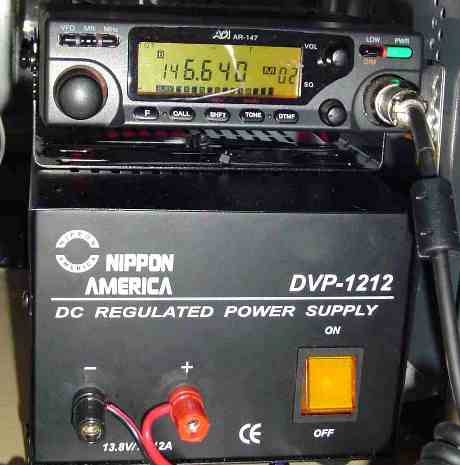| Author |
Message |
    
Fusebreaker
Member
Username: Fusebreaker
Post Number: 50
Registered: 3-2004
| | Posted on Saturday, July 02, 2005 - 6:51 pm: | 


|
I am buying an icom 2100 it puts out 55 watts but can it be turned up with out burning it up to 60 or 65 watts the icom 2200 puts out 65 watts and looks the same as the 2100h? |
    
Bruce
Senior Member
Username: Bruce
Post Number: 2915
Registered: 9-2003
| | Posted on Sunday, July 03, 2005 - 8:09 am: | 


|
WHY?
FUSEBREAKER .... I run my ADI at 20 watts most of the time it is rated at 60 but why burn it up?
If you need more power get a 160 watt brick!
 |
    
Fusebreaker
Member
Username: Fusebreaker
Post Number: 52
Registered: 3-2004
| | Posted on Monday, July 04, 2005 - 11:21 pm: | 


|
thats what im going to do thanks bruce |
    
Crazy_d
New member
Username: Crazy_d
Post Number: 6
Registered: 6-2005
| | Posted on Wednesday, July 06, 2005 - 11:46 pm: | 


|
I had a problem with overheating on my old Icom 2100H. It failed and I had to send it back in for repair. Then I put a fan on the rear and then someone stole it out of my old car. ohh well. Now I use a Yaesu FT-100D and love it. Next radio up is the Icom IC-7000. 73 |
    
Tech237
Moderator
Username: Tech237
Post Number: 162
Registered: 4-2004
| | Posted on Sunday, July 17, 2005 - 12:20 pm: | 


|
Fusebreaker,
Apart from Bruces comment going from 55 to 65w would give a great deal of improvement. Remember it takes a 6db increase in power to see 1 S-point difference at the receiver. 6 dB is a power increase of 4x. This means to get that 1s-point you'd have to increase power by 55x 4 = 220w.
Now while to 160w brick is only a gain of approx 4db signal to noise ratio at the receiver will notice a slightly cleaner signal approaching full quieting (or no hiss) when compared to the 55w. So Bruce is right and the brick is a much better way to go.
|
    
Al_lafon
Member
Username: Al_lafon
Post Number: 52
Registered: 3-2005
| | Posted on Sunday, July 24, 2005 - 4:19 pm: | 


|
I don't see the point in adding 5 to 10 watts
on a 2100 please get your self a 160w brick or
maybe you realy need to hit the books and learn
your Electronics.
Sorry had to Bark at that one
Al Lafon / N3IZR |
    
Fusebreaker
Member
Username: Fusebreaker
Post Number: 59
Registered: 3-2004
| | Posted on Sunday, July 24, 2005 - 7:33 pm: | 


|
I left the radio stock i know that you have to double your power to get 1 s-unit increase then double again to get 2 s-units extra then double it again to get 3 s-unit extra and so on.
Im still learning LOL im 19 now so still got a lot more to learn been a ham since i was 14 learned a lot in 5 years about antennas I love to build them.I was thinking about building a super j-pole i think that it will have about 4db gain. My ? is what is the difference between DB and DBI gain? |
    
Hollowpoint445
Advanced Member
Username: Hollowpoint445
Post Number: 583
Registered: 6-2004
| | Posted on Monday, July 25, 2005 - 7:09 am: | 


|
In the spirit of learning....It's generally agreed that a 6dB (multiplication of 4) increase of signal is necessary for a 1 S-unit gain. Of course this varies a great deal - even among the same model of radio.
Variables include things like alignment, component tolerances, receiver design, and how the S-meter is driven.
Unless your radio's meter has been calibrated using a signal generator it's just a relative representation of signal.
dB is short for decibel and is a used to relate differences between two values and is based on logarithms.
dBi is used to show decibel gain over a theoretical antenna type called an isotropic antenna. An isotropic antenna is a single point in 3 dimensional space that radiates evenly in all directions.
dBd is decibel gain relative to a dipole antenna which is the standard practical antenna. |



